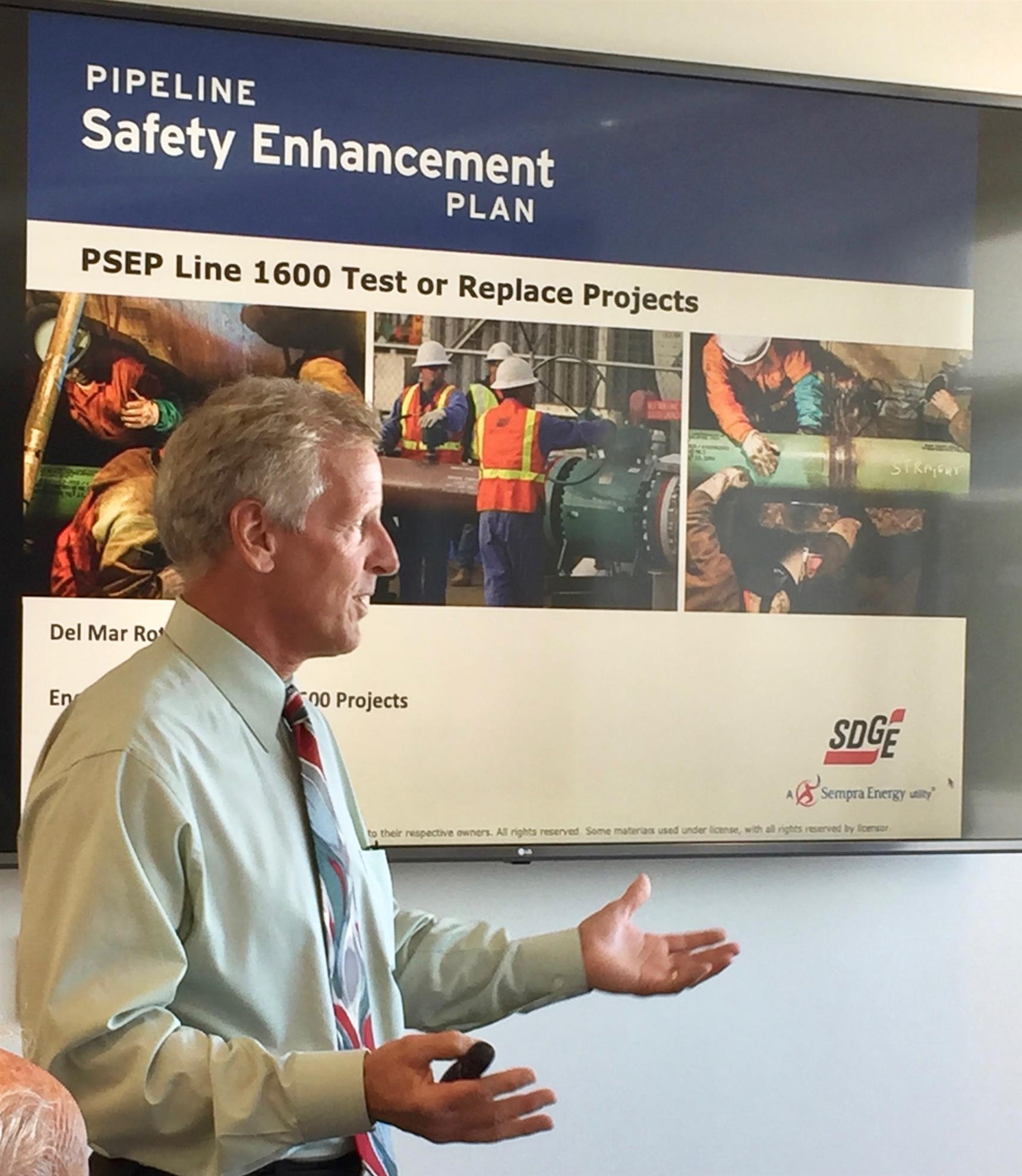
Kevin O'Beirne from San Diego Gas and Electric
Kevin O’Beirne of San Diego Gas & Electric spoke at our October 3, 2019 meeting about the ways that SDGE is working to keep pace with the growing energy demands of San Diego county. The setting was fitting- the building that now houses eMolecules has been open for less than one year and represents the growth in both infrastructure and population that SDGE must service.
As the population of San Diego county grew by more than 10-fold in the past 70 years, so did the need for energy, particularly with the expansion of the list of items that require power. The region was originally serviced by the South Bay and Carlsbad Encina power plants as well as the San Onofre Nuclear plant, with supplements from peaker plants. Now power supplies are more varied and draw on a broader range of energy sources including natural gas, wind and solar. SDGE even installed what is now the second largest lithium ion battery storage facility involving 400,000 batteries that store up to 120 mW hours of energy that can service 20,000 homes for four hours.
Despite these improvements, the county’s energy infrastructure, particularly that which supplies natural gas, is aging. One of the main gas pipelines in San Diego was first laid in the 1940s when fewer then 300,00 people lived in the county. Meanwhile, over 90% of natural gas supplies originate outside California, with most gas delivered from Texas or Oklahoma via pipeline to storage fields located around Los Angeles. Following the natural gas pipeline failure in San Bruno that claimed the lives of 8 people, energy providers now must increase the safety and reliability of natural gas infrastructure. In response to California Public Utility Commission mandates, SDGE is created the Pipeline Safety Enhancement Program (PSEP) and the Pipeline Safety and Reliability Program (PSRP) that will ensure safe and reliable supplies of natural gas to meet energy demands.
As part of the PSEP, more than 20 miles of pipeline around San Diego have been replaced and over the next five years more than 37 miles in both populated and rural areas will be replaced. Existing pipeline will be subjected with strength testing while new pipelines will have multiple safety features including warning mesh to protect against damage from digging and fiber optic cables that enable remote real time monitoring. The pipe itself will be thoroughly tested prior to installation and will be constructed of stronger materials that are resistant to corrosion.
All of these actions are needed to allow SDGE to continue to safely and reliably satisfy the energy needs of the San Diego region, both today in the future.